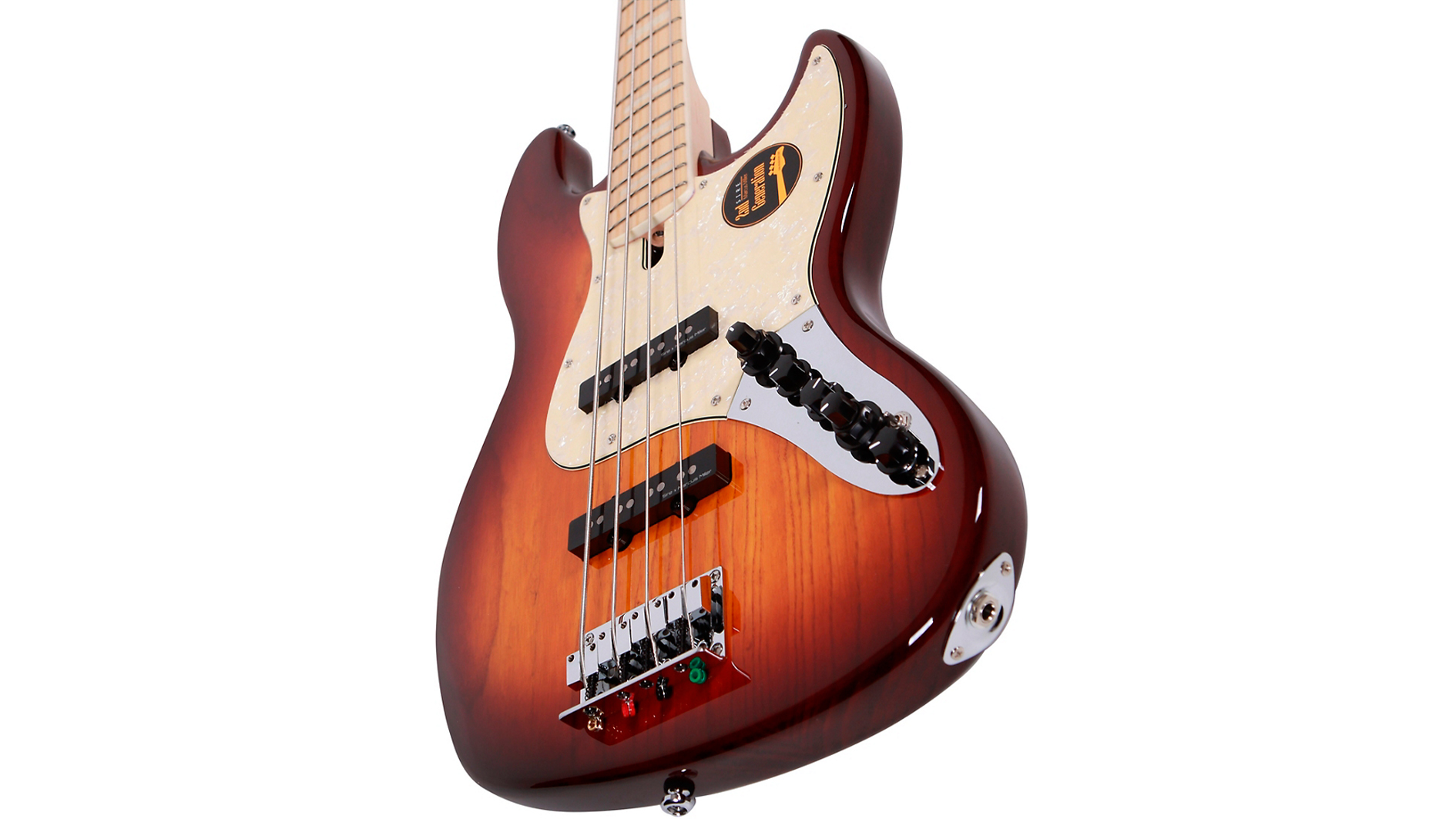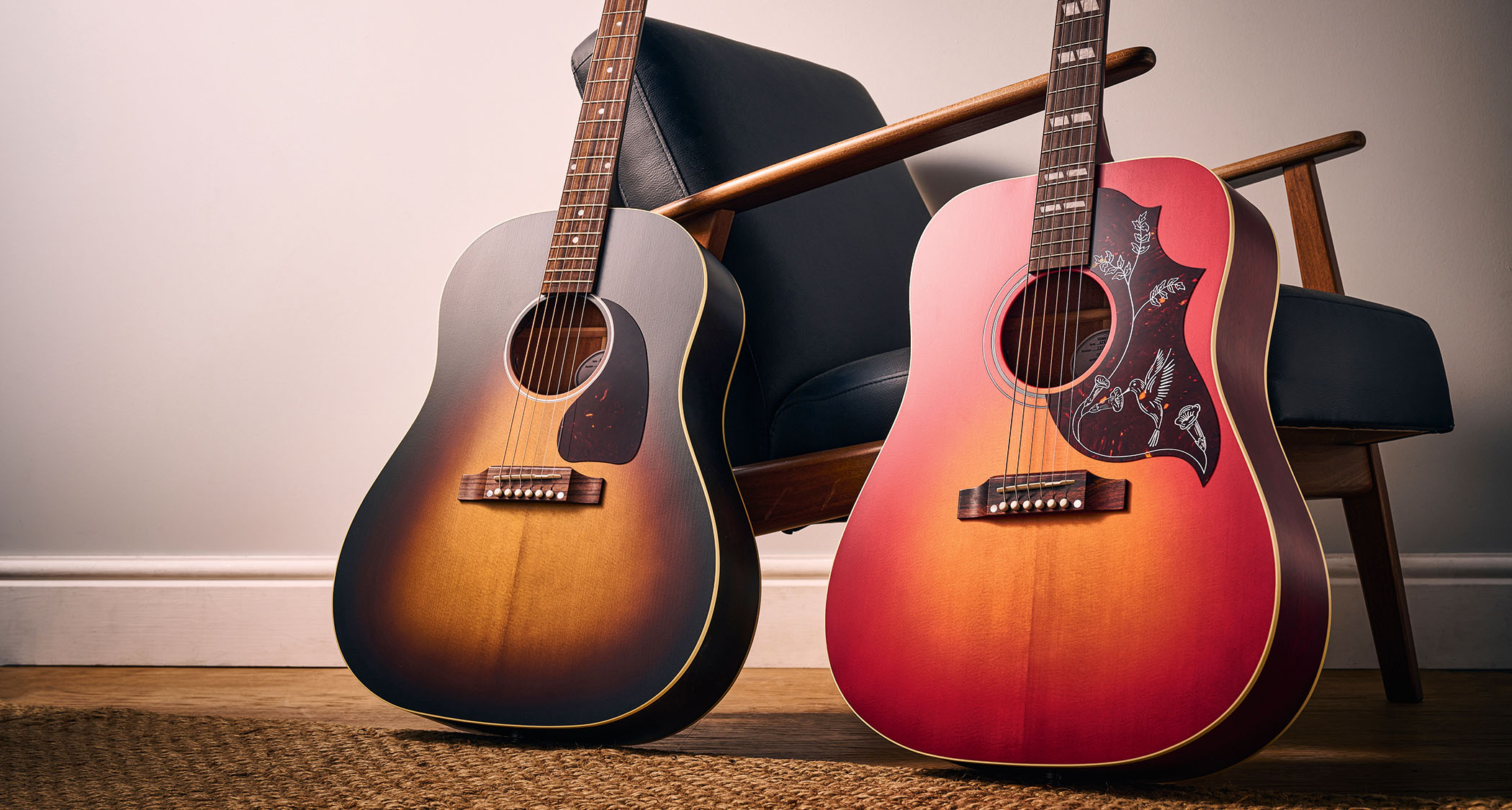Guitar World Verdict
Those on the hunt for a hot-rodded J-style bass would have to spend hundreds more to even get close.
Pros
- +
Delicious tone
- +
Flawless construction for the price
Cons
- -
Knob ergonomics need further development
You can trust Guitar World
There might be Chris Squire with his Rickenbacker 4001, Victor Wooten and his Fodera Yin Yang 4-string, Geddy Lee and a mid-’70s Fender Jazz, and James Jamerson with a flatwound-strung ’62 Fender Precision.
Our perception of most of the greats is inexorably linked to their weapon of choice, and Marcus Miller - he of multiple Grammy Awards, an influential stint with Miles Davis, and enough session credits on hit records to make even his own peers envious - has had one of the closest instrument/player relationships in the bass guitar’s relatively short history.
His Roger Sadowsky-modded ’76 Fender Jazz, with its strange jumbo pickguard, transparent blonde finish, and little “MM” applique letters, is one of the most instantly recognizable basses in music. Why, then, would Marcus decide to work with a relatively unknown Korean company on a line of exceptionally affordable signature models that he actually plays onstage? In two words, price and accessibility.
Back in 2002, when I’d write a story about an Asian-made bass, I’d inevitably marvel at its quality. It got to the point where my primary task seemed to become dreaming up new ways to say the same thing: It’s amazing how cheap and good these basses can be.
In 2015, it’s no longer surprising, and the quality difference between the basses reviewed here, each under $600, and a U.S. or European bass costing three times as much (with the same specs) is essentially nil. Marcus wanted to make a pro-quality bass accessible to the masses, and the Sire V7s accomplish the task with ease.
Made in Indonesia, the V7 basses benefit hugely from the consistency and precision of contemporary CNC manufacturing. Moreover, the hand-finished details, like hardware installation and fit-and-finish, were pretty much faultless.
It was genuinely impossible to find a flaw in the instrument’s finish or fretwork. That isn’t to say that the bass is a direct replacement for a handcrafted boutique instrument, though. The best high-end Fender-style basses I’ve played integrate a slew of subtle touches into a palpable feeling of luxury, playability, and quality.
The Sire doesn’t quite pull that off, but it comes mighty close - and while the micro-nuanced touches aren’t there, there’s also really nothing of substance missing. One small clue as to the bass’ inexpensive origins is its hardware, which includes a “high-mass” bridge with optional through-body stringing and Fender-style open gear tuners.
They function as expected, with no binding or imprecision, but they also don’t ooze deluxe sex appeal. Undoubtedly the bridge is intended to offer a tone similar to the Badass II bridge on Miller’s Fender, which incorporates massive saddles, but it lacks the Badass’ visual vibe. But I’m nitpicking. For the price, the V7s’ construction was essentially perfect.

In keeping with the theme, the Sire basses offer an impressive electronics package for the price. Their J-style pickups are made with Formvar-insulated heavy-gauge wire wrapped on fiber bobbins and energized with an Alnico 5 magnet - vintage-esque details that are often neglected in inexpensive import pickups.
The pickups feed a remarkably robust 18-volt preamp that Sire and Marcus Miller partnered to design. Consisting of three bands of EQ with a semi-parametric midrange, a passive-style tone control, and active/passive switch, the preamp sounds fantastic, offering a ton of variety due in no small part to the sweepable midrange band and always-welcome tone control.
Given that it’s such a lovely-sounding circuit, it’s a bummer that the knob ergonomics are so poor. The two concentric pots (volume/tone and mid/mid-frequency) were finicky as heck; adjustments to the top knob inevitably led to inadvertent sweeps of the bottom knob. If I were Sire, I’d be on the lookout for a pot/knob combo that doesn’t bind top adjustments to the bottom.
Even less appealing is the placement of the active/passive switch, which seems like an afterthought, shoved awkwardly between the midrange and bass controls. While it isn’t a switch that gets much switching, it still seems weird where it is.
Both Sire basses had excellent playability, with just a touch of the neck dive that one can reasonably expect from a J-style body/headstock combo. The shallow-C profile neck was fast, the healthy radius felt right, and the strapped and lapped balance was pure Fender-land. Not much to cover here except that the V7s feel like Fender Jazz Basses through-and-through - relatively light ones, to boot.
I tested the Sire basses through a slew of rigs, including various combinations of Glockenklang, Aguilar, Markbass, and EBS heads and cabinets, and in my home studio through a Neve RNDI into an Apogee Duet feeding Logic Pro.
I took the 4-string out on a gig, the 5 to several rehearsals, and did a little tracking. In short, I know what the basses sound like.
So, what do I know? They sound good. This, by far, in spite of the great-for-the-price construction, is the basses’ most compelling attribute. They sound legit good.
Of course I couldn’t resist trying to pull my most Marcus-ish tone out of the 4-string, and sure enough, it was a breeze. I simply boosted the bass and treble, cut the mids in the 600Hz range, blended the pickups, dimed the tone, et voilà, total Tutu time.
Backing off on the tone a bit and soloing the bridge pickup was Jaco-city, with a rich and burpy midrange and gut-busting punch. Interestingly, the pickups are in ’60s position - different from Miller’s Fender, but perhaps the favored position for bridge-pickup funk and blended full-bodied support.
The EQ is powerful - with 18 volts on tap, small adjustments yield big results. I was no less impressed with the 5’s B string, which felt consistently taut and controlled. And kudos to Sire for stringing the basses with good D’Addario strings and not some generic knockoffs - it makes a huge impact on a first impression.
The Sire basses represent the best value out there if you’re looking for a hot-rodded J-style bass. I haven’t seen anything that comes close. In order to purchase an instrument that offers a notable upgrade in sound or feel, one would probably be looking at triple the price, at least.
Whether you’re seeking to add a J to the quiver, or you already have one but need a 5 (or perhaps an alder/rosewood combo), the Marcus Miller Sire V7s deliver. Just like their namesake.
“Affordable versions of the three best basses I've ever held in my hands”: Sterling by Music Man completes its trilogy of Joe Dart signature models with a trio of made-to-order basses that cost less than $500
“The ace up the sleeve of bass players around the globe since 1978”: Tobias instruments were trailblazers in the bass world. Now they’re back as part of the Gibson family











